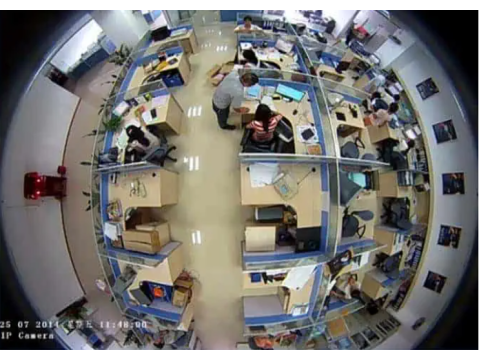Comprehensive Guide to Installing Office Surveillance Systems
Installing a video surveillance system in an office is a practical step toward enhancing security and operational transparency. Depending on the office size and infrastructure, the system can vary from simple analog setups to advanced IP networks. This guide explores the critical steps, from camera placement to system configuration, for effective office surveillance.
Key Considerations for Office Surveillance
1. System Type Selection
Large Offices with Network Infrastructure:
- IP cameras are ideal for offices with a local area network (LAN), allowing seamless data transfer and wireless configurations.
- These systems support advanced features like video analytics and remote access.
Small Offices:
- Analog systems are cost-effective and reliable, suitable for offices with minimal surveillance requirements.
- Modern analog systems can also provide decent video quality and basic functionality.
Optimal Camera Placement in the Office
1. Workstations:
- Avoid placing cameras directly at workstations to maintain employee morale and privacy.
- Exceptions include areas where client interactions occur, such as service desks or consultation rooms, to document transactions or resolve disputes.
2. Entrances and Exits:
- Install cameras at the main office entrance to monitor visitors and employees.
- Ensure cameras capture clear images of faces for identification.
3. Hallways and Common Areas:
- Use cameras to track movement in corridors and shared spaces.
- These locations are cost-efficient for monitoring large areas without requiring numerous devices.
4. Sales or Document Processing Areas:
- Position cameras to capture activities around sales desks or document handling zones.
- Include an identification camera focused on the entry to these areas for enhanced security.
Key Components of an Office Surveillance System
Cameras:
- Resolution: Ensure cameras have at least 2MP for clear image quality.
- Field of View: Wide-angle lenses are preferable for large areas, while narrow views are ideal for entry points.
Recording Devices:
- DVR (for analog systems) or NVR (for IP systems).
- Consider storage capacity based on the number of cameras and desired recording duration.
Connectivity:
- Use coaxial cables for analog systems or CAT5e/CAT6 cables for IP systems.
- Wireless solutions can reduce installation complexity, especially in offices with existing Wi-Fi infrastructure.
Power Supply:
- Ensure stable power connections with uninterruptible power supply (UPS) systems for uninterrupted operation.
Steps to Install an Office Surveillance System
Plan the Layout:
- Identify critical areas for monitoring, including entrances, exits, and hallways.
- Draft a layout showing camera placements and cabling routes.
Install Cameras:
- Mount cameras at a height of 8-10 feet to avoid tampering while maintaining a clear view.
- Use protective casings for cameras in high-traffic areas.
Set Up Recording Devices:
- Install the DVR/NVR in a secure, ventilated space.
- Configure the system for continuous or motion-based recording to optimize storage.
Configure Remote Access:
- Enable remote access via apps or web interfaces for real-time monitoring.
- Secure the system with strong passwords and firewall settings.
Benefits of Office Surveillance Systems
- Enhanced Security: Prevent unauthorized access and monitor visitor activity.
- Operational Transparency: Improve accountability among employees and management.
- Dispute Resolution: Use recorded footage to address conflicts or complaints.
- Visitor Monitoring: Ensure a professional and secure environment for clients.
Legal and Ethical Considerations
- Notify employees and visitors about surveillance through signage.
- Avoid monitoring areas like restrooms or break rooms to respect privacy.
- Ensure compliance with local laws governing workplace surveillance.
Conclusion
Installing a video surveillance system in an office is a vital step for improving security and enhancing operational efficiency. By selecting the appropriate equipment and following best practices for installation, you can create a secure and professional workplace environment.

